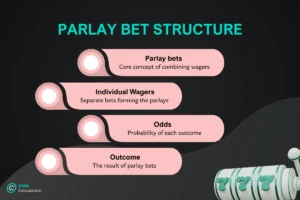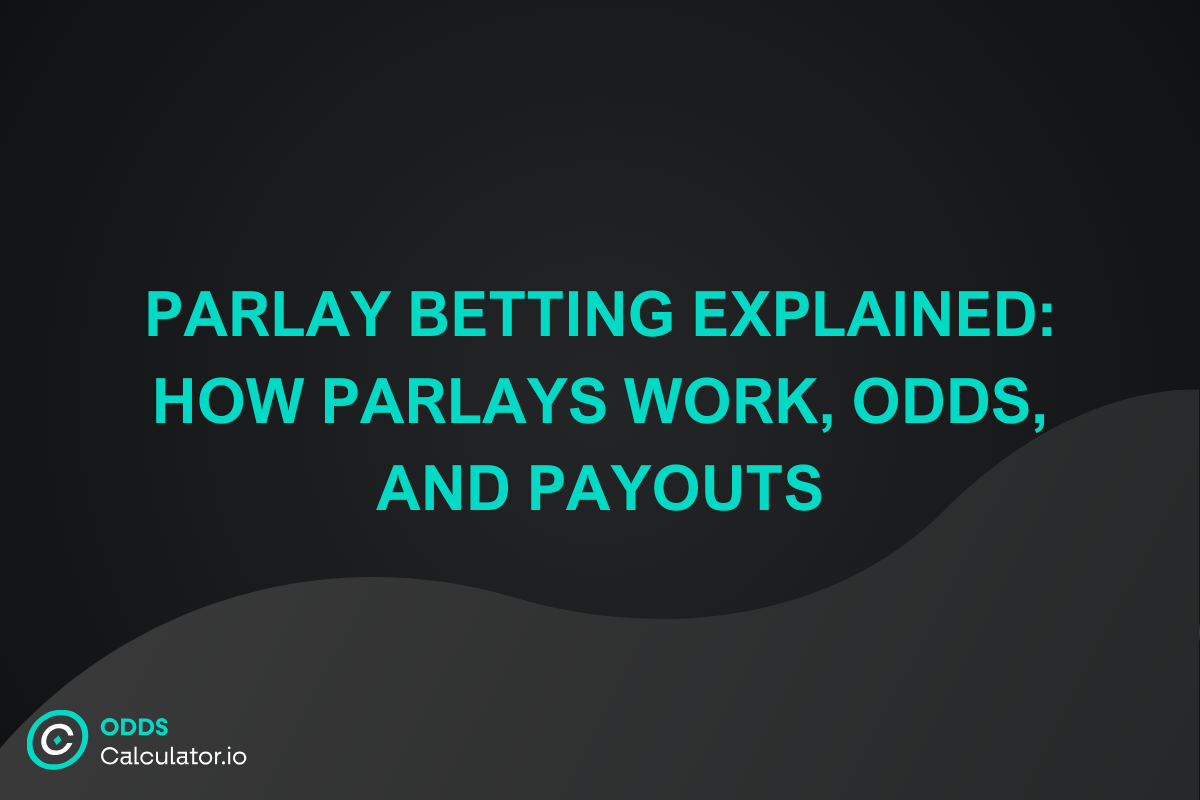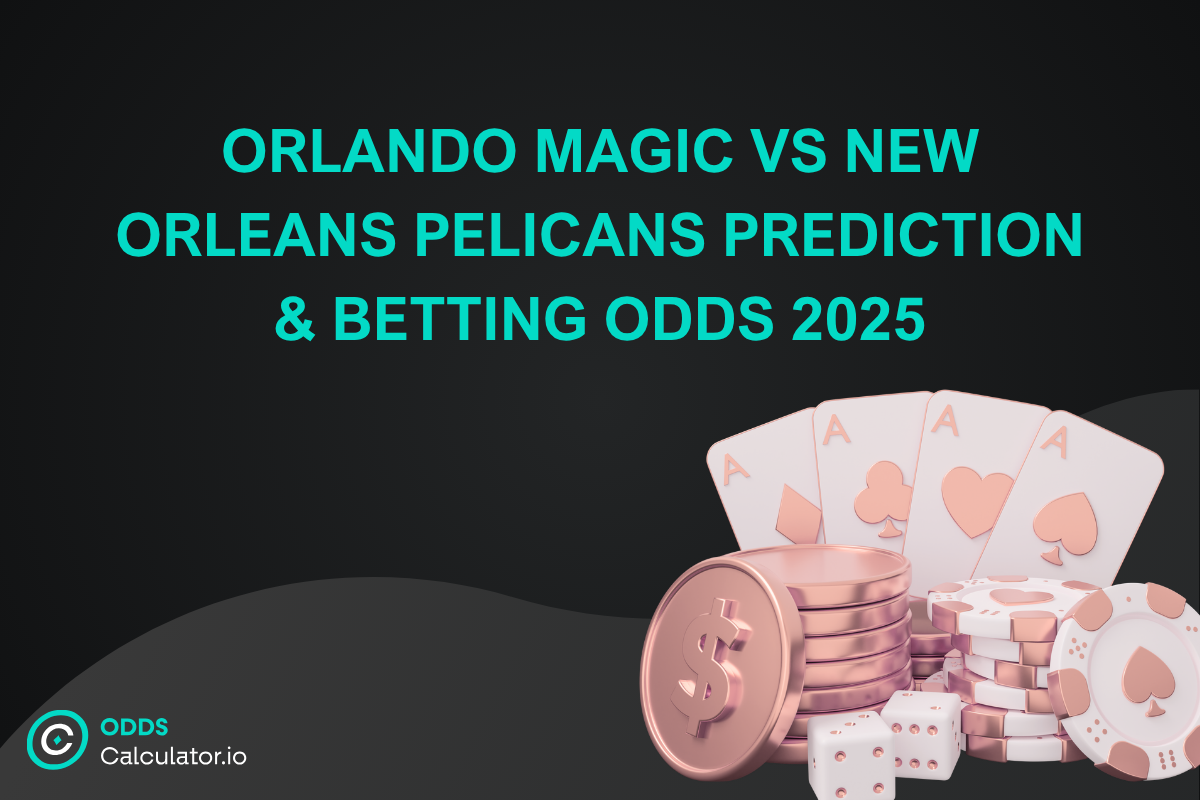Parlay betting, known as accumulator betting in the UK, represents one of the most exciting yet challenging forms of sports wagering. With 49% of UK adults participating in gambling activities according to the latest Gambling Commission data, understanding how parlay bets work has become essential for modern punters seeking bigger returns from smaller stakes.
In this comprehensive guide, we’ll break down everything you need to know about parlay betting, from the fundamental concepts to advanced strategies that seasoned punters use to gain an edge.
What Is Parlay Betting?

A parlay bet combines multiple individual wagers into a single bet, where all selections must win for the bet to pay out. Unlike single bets, parlays offer exponentially higher odds because the probability of multiple outcomes occurring simultaneously is significantly lower.
For example, if you back Manchester United to win at 2.0 odds, Liverpool to win at 1.8 odds, and Arsenal to win at 1.5 odds, your parlay odds would be 2.0 × 1.8 × 1.5 = 5.4. A £10 stake would return £54 if all three teams win, but if any single team loses, the entire bet fails.
Key Parlay Betting Terms
- Legs: Individual bets within your parlay
- Accumulator: UK term for parlay betting
- Treble: Three-selection parlay
- Acca: Shortened form of accumulator
Parlay betting has become one of the most popular forms of sports wagering in the UK, offering punters the chance to turn modest stakes into substantial returns. But what exactly is parlay betting, and how can you maximise your chances of success whilst understanding the inherent risks?
How Parlay Betting Works: The Mechanics
Understanding the mechanics of parlay betting is crucial before placing your first accumulator wager. Here’s how it works in practice:
The Multiplication Effect
When you combine multiple bets (or legs), the odds multiply, which increases both potential payouts and the sportsbook’s advantage. For example, if you combine three legs with odds of +100, +102, and +172, the combined odds come out to around +1015 (approximately an 8.97% chance of winning).
Let’s examine a practical example using UK-friendly decimal odds:
- Selection 1: Manchester United to win at 2.00 odds
- Selection 2: Arsenal to win at 1.80 odds
- Selection 3: Liverpool to win at 1.90 odds
Combined parlay odds: 2.00 × 1.80 × 1.90 = 6.84
A £20 stake would return £136.80 if all three selections win, representing a profit of £116.80.
The All-or-Nothing Rule
One wrong pick, and the parlay loses. This fundamental principle makes parlay betting both thrilling and perilous. Even if two of your three selections win convincingly, a single incorrect prediction eliminates your entire stake.
Understanding Different Odds Formats for Parlay Betting
Successful parlay betting requires fluency in multiple odds formats, particularly when using parlay calculator tools or converting between systems.
American Odds in Parlay Calculations
American odds (also called moneyline odds) use positive and negative numbers to represent underdogs and favourites respectively. Positive numbers show how much profit you’d make on a £100 stake, whilst negative numbers indicate how much you need to stake to win £100.
Decimal Odds: The Simplest Format
Decimal odds represent the total return (stake plus profit) for every £1 wagered. They’re the most straightforward format for parlay calculations because you simply multiply the decimal odds of each selection together.
Fractional Odds: Traditional UK Format
Fractional odds show the potential profit relative to your stake. Converting fractional to decimal odds involves dividing the numerator by the denominator and adding 1. For instance, 5/2 fractional odds convert to 3.50 in decimal format.
The Mathematics Behind Parlay Betting
Understanding the mathematical principles underlying parlay betting helps you make informed decisions about risk and potential returns.
House Edge Accumulation
Adding more legs significantly increases the sportsbook’s hold. For instance, while single bets might have a 4.54% hold, a four-leg parlay can push that hold past 16%.
This compounding effect explains why bookmakers actively promote parlay betting. The house edge increases with each additional leg:
- 2 legs: 8.88% house edge
- 4 legs: 16.97% house edge
- 6 legs: 24.35% house edge
- 8 legs: 31.07% house edge
Probability and Expected Value
Each additional selection in your parlay dramatically reduces your overall probability of success. Consider these examples with evens (2.00 decimal) odds:
- Single bet: 50% win probability
- 2-leg parlay: 25% win probability
- 3-leg parlay: 12.5% win probability
- 4-leg parlay: 6.25% win probability
Types of Parlay Bets
Modern sportsbooks offer various parlay formats to cater to different betting preferences and strategies.
Traditional Multi-Game Parlays
These involve selections across different matches or events. For example, combining Premier League, Champions League, and Championship matches in a single accumulator.
Same-Game Parlays
A same-game parlay (SGP) is a type of sports bet where you combine multiple wagers from the same game into one parlay ticket. Traditionally, parlays required selections from different games, but sportsbooks now allow bettors to link bets within a single matchup.
Same-game parlays might include combining the match result, total goals, and first goalscorer in a single football match.
Progressive Parlays
Some bookmakers offer progressive parlays that provide partial payouts even if one selection loses, though at significantly reduced odds.
Strategic Approaches to Parlay Betting
Successful parlay betting requires discipline, research, and strategic thinking rather than chasing massive payouts with unlikely combinations.
The Sweet Spot: 2-3 Leg Parlays
Many professional bettors stick to parlays with no more than two or three legs to keep their risk manageable. This approach balances enhanced returns with realistic win probabilities.
Sarah, a Manchester-based punter, shared her experience: “I used to chase 8-leg accumulators with massive odds, but I was essentially throwing money away. Now I stick to doubles and trebles with carefully researched selections, and my overall profitability has improved dramatically.”
Research and Analysis
Treat each leg of your parlay as seriously as you would a single bet. This means:
- Analysing team form and injury reports
- Considering weather conditions and venue factors
- Reviewing head-to-head records
- Understanding market movements
Bankroll Management
Never risk more than 1-2% of your betting bankroll on a single parlay, regardless of how confident you feel. The mathematics work against you, and even the most carefully constructed accumulators can fail due to unexpected results.
Using Parlay Calculators Effectively
Before placing any accumulator bet, use a convert American to decimal odds calculator to ensure you fully understand your potential returns and implied probabilities. This prevents costly mistakes and helps you make more informed decisions.
Common Parlay Betting Mistakes to Avoid
Learning from others’ mistakes can save you significant losses in your parlay betting journey.
The “Sure Thing” Trap
Adding heavy favourites to your parlay might seem like a guaranteed win, but it significantly reduces your potential returns whilst still carrying risk. Every selection can lose, regardless of the odds.
Chasing Losses with Bigger Parlays
After a losing streak, avoid the temptation to place larger, more complex parlays to recoup losses quickly. This typically leads to even greater losses.
Ignoring Correlation
In same-game parlays, be aware of correlated outcomes. For example, if you bet on a high-scoring match, betting on the underdog to win might be counterproductive as high-scoring games often favour the stronger team.
Overvaluing Past Success
Just because your last parlay won doesn’t mean your strategy is infallible. Variance plays a significant role in short-term results.
Advanced Parlay Strategies
For experienced punters ready to elevate their approach, consider these advanced techniques:
Hedge Betting
If several legs of your parlay have won and you’re left with one final selection, you might consider hedging by backing the opposite outcome. This guarantees a profit regardless of the final result, though at reduced potential returns.
Correlated Parlays
In certain situations, you can exploit positive correlation between outcomes. For example, in football, backing both teams to score and the over 2.5 goals market often correlates positively.
Value-Based Selection
Focus on identifying value bets for each leg rather than simply backing favourites or chasing long odds. A parlay of three moderate value bets often provides better long-term returns than one containing overpriced favourites.
Conclusion
Parlay betting offers an exciting way to potentially multiply your returns, but success requires understanding the mathematics, managing your expectations, and approaching each wager with discipline and research.





